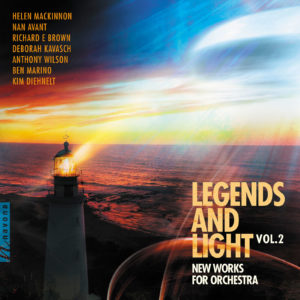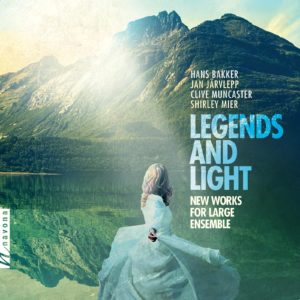Legends and Light Vol. 3
Ben Marino composer
Fergus Johnston composer
Joungmin Lee composer
Raffaele Marcellino composer
Josef Suk composer
Janáček Philharmonic Ostrava
Maroš Potokár, Jiří Petrdlík, Stanislav Vavřínek conductors
Navona Records is proud to present LEGENDS AND LIGHT VOL. 3, an ambitious collection of new works for large ensemble performed by the Janáček Philharmonic Ostrava. Several modern composers assemble on this album to deliver new expressions in classical music, highlighting stark contrasts of darkness and light and the other-worldy experiences that charge our artistic spirit. Inspired by art, mystical experiences, and the wonders of our universe, this edition of the LEGENDS AND LIGHT series casts a serene spotlight on the compositional innovation and orchestral ferocity of today’s composers and performers, an exhilarating showcase of the current and exciting state of classical music.
Listen
Stream/Buy
Choose your platform
An Inside Look
Ben Marino – Tenebron | Fergus Johnston – Binn an tSíorsholais
Track Listing & Credits
| # | Title | Composer | Performer | |
|---|---|---|---|---|
| 01 | Tenebron | Ben Marino | Janáček Philharmonic Ostrava | Maroš Potokár, conductor | 5:06 |
| 02 | Binn an tSíorsholais (The Peak of Eternal Light) | Fergus Johnston | Janáček Philharmonic Ostrava | Jiří Petrdlík, conductor | 13:10 |
| 03 | Sanctuary Tree | Joungmin Lee | Janáček Philharmonic Ostrava | Jiří Petrdlík, conductor | 11:30 |
| 04 | L’arte Di Volare (The Art of Flying): I. Decollo (Take-Off) | Raffaele Marcellino | Janáček Philharmonic Ostrava | Stanislav Vavřínek, conductor | 4:46 |
| 05 | L’arte Di Volare (The Art of Flying): II. Aliante (Gliding) | Raffaele Marcellino | Janáček Philharmonic Ostrava | Stanislav Vavřínek, conductor | 3:40 |
| 06 | L’arte Di Volare (The Art of Flying): III. La Formazione (The Formation) | Raffaele Marcellino | Janáček Philharmonic Ostrava | Stanislav Vavřínek, conductor | 4:10 |
| 07 | L’arte Di Volare (The Art of Flying): IV. Gran Volta (The Loop-the-Loop) | Raffaele Marcellino | Janáček Philharmonic Ostrava | Stanislav Vavřínek, conductor | 5:17 |
| 08 | L’arte Di Volare (The Art of Flying): V. Atteraggio (Landing) | Raffaele Marcellino | Janáček Philharmonic Ostrava | Stanislav Vavřínek, conductor | 3:15 |
| 09 | Serenade, Op. 6: I. Andante con moto | Josef Suk | Janáček Philharmonic Ostrava | Jiří Petrdlík, conductor | 5:44 |
Tenebron
Recorded August 29, 2022 at Czech Radio Ostrava Studio 1 in Ostrava, Czech Republic
Producer Jan Košulič
Engineer Aleš Dvořák
Assistant Engineer Jan Balcar
Editing & Mixing Lucas Paquette
Binn an tSíorsholais
Recorded February 3, 2022 at Dům Kultury města Ostravy (The Ostrava House of Culture) in Ostrava, Czech Republic
Producer, Editing & Mixing Jan Košulič
Engineer Aleš Dvořák
Assistant Engineer Pavel Paluřík
Additional Editing & Mixing Lucas Paquette
Sanctuary Tree
Recorded February 12, 2020 at Dům Kultury města Ostravy (The Ostrava House of Culture) in Ostrava, Czech Republic
Producer, Editing & Mixing Jan Košulič
Engineer Aleš Dvořák
Assistant Engineer Jana Jelínková
Additional Editing & Mixing Lucas Paquette
L’arte Di Volare
Recorded August 31 and September 1, 2022 at Czech Radio Ostrava Studio 1 in Ostrava, Czech Republic
Producer Jan Košulič
Engineer Aleš Dvořák
Assistant Engineers Adam Janků, Marek Hoblík, Aleš Dluhý
Editing & Mixing Lucas Paquette
Serenade, Op. 6
Recorded February 26, 2019 at Dům Kultury města Ostravy (The Ostrava House of Culture) in Ostrava, Czech Republic
Producer Jan Košulič
Co-producer Bob Lord
Engineer Aleš Dvořák
Assistant Engineer Maroš Hlatký
Recording Sessions Assistant Emma Terrell
Editing & Mixing Shaun Michaud
Mastering Melanie Montgomery
Executive Producer Bob Lord
A&R Director Brandon MacNeil
A&R Danielle Sullivan
VP of Production Jan Košulič
Production Director Levi Brown
Audio Director Lucas Paquette
Production Assistant Martina Watzková
VP, Design & Marketing Brett Picknell
Art Director Ryan Harrison
Design Edward A. Fleming, Morgan Hauber
Publicity Brett Iannucci, Aidan Curran
Artist Information

Ben Marino
Ben Marino (b. February 18, 1982) is a composer, producer, and pianist. Born and raised in Valencia CA, his education in music started early at the piano learning the Suzuki method. His private piano studies continued throughout high school where he was influenced by the solo piano compositions of Bela Bartok and Frederic Chopin. After graduating William S. Hart High School in Newhall CA in 2000, he was accepted to study Piano Performance and Music Composition at the prestigious Berklee College of Music in Boston, MA (2001-2002).

Fergus Johnston
Fergus Johnston (b. 1959) is an Irish-born composer. He graduated from Trinity College Dublin with an Honors degree in Music in 1982. In 1999 he completed a Master's degree in Music and Media Technology at TCD (1999), and in 2011 he received a Ph.D. from the National University of Ireland, Maynooth. As a result of his contribution to Irish culture, he was elected to membership of Aosdána, Ireland's state-supported artistic academy, in 1992, and was a board member of the National Concert Hall, Dublin from 1996 until 2001.

Joungmin Lee
Joungmin Lee is a composer, choral conductor, and digital music artist focusing on acoustic and electroacoustic music with interdisciplinary approaches. Lee's music is an experimentalist endeavor in pursuit of innovative sound both in the instrumental and digital worlds. He attempts to make this happen with several means, including spectral techniques, computer music, or any combination of these trends.

Raffaele Marcellino
Marcellino's sound embraces Western art music tradition with eclectic influences from other musical traditions such as jazz and non-western music and folk traditions. Since graduation, Marcellino has built an international profile as a composer in various genres of chamber music, orchestral music, opera, musical theater, and radio works. He has been awarded various prizes and commissions, including an Australia Council Fellowship and the Lowin Prize for his work Canticle for Brisbane Cathedrals Festival.
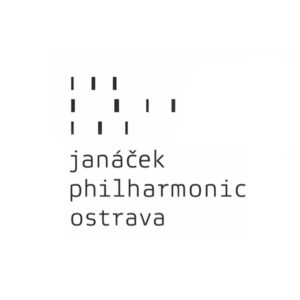
Janáček Philharmonic Ostrava
The Janáček Philharmonic is a world-class symphony orchestra based in Ostrava, Czech Republic and an emerging figure on the international performance scene. With over 100 top-level musicians, the orchestra aims to introduce unique, quality repertoire while showcasing their own recognizable sound.
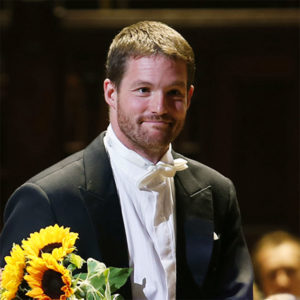
Jiří Petrdlík
Jiří Petrdlík (b. 1977) is appreciated as one of the most respectable conductors of his generation. He studied piano, trombone, and conducting — 1995–2000 at Prague Conservatory, and 2000–2005 at Academy of Performing Arts Prague — with Hynek Farkač, Miroslav Košler, Miriam Němcová, Radomil Eliška, and Tomáš Koutník, and took part in the masterclasses of the New York Philharmonic Principal Conductor Kurt Masur and the BBC Philharmonic Principal Conductor Jiří Bělohlávek. Petrdlík also successfully took part in several competitions, including the Donatella Flick Conductor Competition in London.
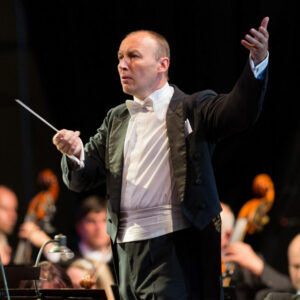
Stanislav Vavřínek
Stanislav Vavřínek is one of the most prominent Czech conductors and has been Chief Conductor of the Czech Chamber Philharmonic Orchestra Pardubice since 2018. Having graduated from the Conservatory in Brno where he studied flute and conducting, he continued his education at the Academy of Performing Arts in Prague. Subsequently, he also took master classes with Roberto Benzi in Switzerland, culminating with a concert in which he conducted the Biel Philharmonic Orchestra.

